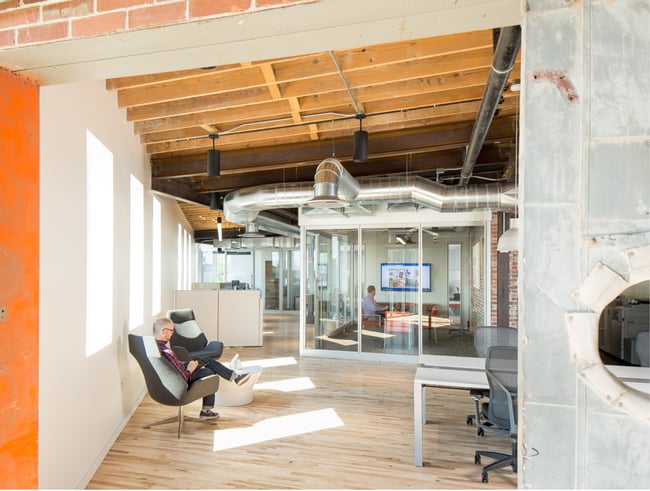Buildings that are Good Candidates for Adaptive Reuse

Adaptive reuse, the practice of repurposing an existing building for a new use, has been gaining popularity across the US. These projects offer the opportunity to preserve a community’s character, mitigate urban blight, and reduce the carbon emissions and waste associated with demolition.
While adaptive reuse is always viable, some buildings are more suited for the practice than others. Choosing the right building can even open the door to funding opportunities and tax credits.
This article will discuss some of the building types that are a good fit for adaptive reuse, including:
- Historic buildings or buildings in historic districts
- Buildings in TIF districts
- Designated grayfields or brownfields
- Buildings with obsolete uses
After reading, you will better understand what to look for when starting your site selection process.
Historic Buildings or Buildings in Historic Districts
When selecting a building for adaptive reuse, consider financing options. Working with an existing structure can present additional costs, so it helps to maximize funding.
State and federal historic tax credits are one of the most lucrative forms of financing for adaptive reuse projects. These tax credits incentivize historic redevelopment that retains character-defining spaces and features.
In Iowa, projects can receive a tax credit equal to 25% of qualified rehabilitation expenses. The federal program offers an additional 20%.
Only “certified historic structures” or those considered “contributing resources” to a historic district are eligible for the program. If you find a building meeting these criteria, your project can become more financially viable.
Buildings in TIF Districts
Tax Incremental Financing (TIF) is another funding option for adaptive reuse projects. TIF allows local governments to subsidize infrastructure or community improvement projects that stimulate economic growth and increase the city’s tax base.
Guidelines differ from city to city, but typically, cities offer either tax rebates or upfront cash that the developer pays back through taxes.
Cities may stipulate requirements for sustainability, historic preservation, or cultural opportunities to ensure the project aligns with public policy goals. Additionally, the city may only offer TIF in economically vulnerable areas known as “TIF districts.” If you are considering adaptive reuse, TIF districts are a good place to start your search for a building.
TIF can be used alongside other funding options, including state and federal historic tax credits. By stacking financing, you improve your project’s viability.
Designated Grayfields and Brownfields
Grayfields are abandoned, blighted, or underutilized properties that cities may struggle to develop. Although not the most attractive properties at first glance, grayfields are apt for adaptive reuse and can offer additional financing opportunities.
In Iowa, you can receive a tax credit equal to 12% of qualified rehabilitation expenses for redeveloping a grayfield site or a 15% credit for meeting green building requirements. Although green building standards differ across project types, most projects must follow Leadership in Energy and Environmental Design (LEED) guidelines.
Similarly, you can receive tax credits for redeveloping brownfields—properties by potentially hazardous materials.
These projects tend to present more upfront costs but offer greater tax credits. In Iowa, owners can receive a tax credit equal to 24% of qualified rehabilitation expenses for brownfield redevelopment. Tax credits increase to 30% for meeting green building standards.
Grayfield and brownfield redevelopment is an opportunity to make a positive social and environmental impact. When selecting a site, these often-overlooked properties may be a viable option.
Buildings with Obsolete Uses
From factories to shopping malls, the US has plenty of building stock that no longer serves its original purpose. Without a relevant use, these buildings risk demolition.
Adaptive reuse offers an opportunity to breathe new life into these forgotten structures. Fort Des Moines, for example, repurposes a historic military base for affordable housing.
These projects can spur economic development. Any time you inject money into a blighted or overlooked building, you contribute to revitalization efforts. One project can be the start of long-lasting economic change.
Adapting a building with an obsolete use can also provide access to architectural features that are hard to come by today. For example, Market One contains load-bearing masonry, a construction technique that is expensive to do on a large scale today. By exploring the possibilities beyond the building’s original use, you create the opportunity to preserve your community’s architectural heritage.

Adaptive reuse is a chance to breath life into obsolete structures.
How an Architect Can Help with Adaptive Reuse Site Selection
When selecting a building for an adaptive reuse project, consider the project’s wider impact. Some buildings—like those in grayfields, brownfields, or TIF districts—offer the opportunity to spur economic development, while those in historic districts offer the chance to preserve a community’s character.
These building types often come with tax incentives, making your project more viable.
At the same time, think beyond the building’s current state and imagine the possibilities. Adaptive reuse is a way to save building stock that may be impossible to develop under normal circumstances.
Working with an architect during the site selection process can help you find a building that meets your project’s goals. They can assist by analyzing sustainability options, performing test fits, and more. Learn more by reading about an architect’s role in the site selection process.